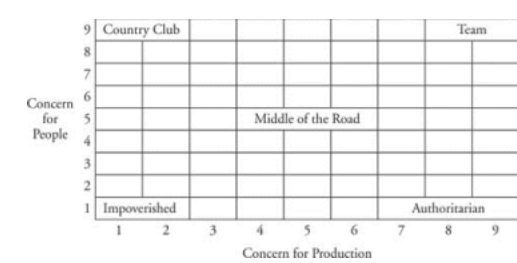
a) Vertical communication
Communication that flows both up and down the organizational hierarchy, usually along formal reporting lines, is known as vertical communication.
1. Upward communication: Messages that move up the hierarchy from subordinate to supervisor constitute upward communication. Research has shown that upward communication is often subject to distortion because subordinates withhold or distort information that makes them look bad.
2. Downward communication: Messages moving down the hierarchy from superiors to subordinates constitute downward communication. Downward communication often includes job directives, assignments, performance feedback, and other information that the boss thinks is of value to the subordinate.
b) Lateral (horizontal) communication
Lateral or horizontal communication consists of messages transmitted among colleagues and peers at the same levels of the organization. It facilitates coordination among interdependent units. It plays a major role in matrix designs or in committees that have representatives from several departments.
c) The informal communication network
The grapevine is the informal communication network that exists in most organizations. The two most common types of informal networks are the gossip chain and the cluster chain. In the gossip chain, one person spreads a message to as many others as possible. They may either keep the information to themselves or pass it on. In the cluster chain, one person passes information to a selected few individuals. Some of them pass it on to a few other individuals; the others keep it to themselves. Research has shown that information carried by the informal communication network is fairly accurate. Because the grapevine cannot be eliminated, managers should exercise some control over it. Managers can obtain valuable information from the grapevine and use it to improve decision making.
d) Nonverbal communication
Any communication exchange that does not use words at all or that uses words to carry more than just literal meaning is known as nonverbal communication. Nonverbal communication is a powerful but little understood form of communication in organizations. Managers need to be aware of it and recognize its potential impact.
Research has identified three important vehicles of nonverbal communication: · Images are “pictures” that are conveyed by words.
- The setting of a message boundaries, familiarity, and home turf plays a major role in nonverbal communication: the size of a desk and the presence or absence of windows in an office may speak volumes.
- Body language consists of the gestures, postures, and facial expressions that accompany or substitute for speech.
Other forms of communication: include “management by wandering around” and informal interchanges that take place outside the normal work setting among members of an informal or interest group.
Titany answered the question on September 20, 2021 at 12:54
- Describe the Reinforcement theory of motivation(Solved)
Describe the Reinforcement theory of motivation
Date posted: September 20, 2021. Answers (1)
- Describe the David McClelland’s learned needs Theory of motivation(Solved)
Describe the David McClelland’s learned needs Theory of motivation
Date posted: September 20, 2021. Answers (1)
- Describe the Alderfer’s ERG Theory of motivation(Solved)
Describe the Aldermen's ERG Theory of motivation
Date posted: September 20, 2021. Answers (1)
- Limitations of the Hierarchy of Needs Model (Solved)
Limitations of the Hierarchy of Needs Model
Date posted: September 20, 2021. Answers (1)
- List three characteristics of learning organizations(Solved)
List three characteristics of learning organizations
Date posted: September 20, 2021. Answers (1)
- Describe three situational leadership theories(Solved)
Describe three situational leadership theories
Date posted: September 20, 2021. Answers (1)
- Forms of power used by managers to change employee behaviour (Solved)
Forms of power used by managers to change employee behaviour
Date posted: September 20, 2021. Answers (1)
- Identify the leadership styles found in the managerial grid model below
(Solved)
Identify the leadership styles found in the managerial grid model below

Date posted: September 20, 2021. Answers (1)
- Abilities that successful leaders possess according to Peter Drucker(Solved)
Abilities that successful leaders possess according to Peter Drucker
Date posted: September 20, 2021. Answers (1)
- Identify six core characteristics that the majority of effective leaders possess(Solved)
Identify six core characteristics that the majority of effective leaders possess
Date posted: September 20, 2021. Answers (1)
- Describe the importance of leadership in an organisation(Solved)
Describe the importance of leadership in an organisation
Date posted: September 20, 2021. Answers (1)
- Define directing in relation to leadership(Solved)
Define directing in relation to leadership
Date posted: September 20, 2021. Answers (1)
- Describe the employee compensation(Solved)
Describe the employee compensation
Date posted: September 20, 2021. Answers (1)
- Limitations of performance appraisal (Solved)
Limitations of performance appraisal
Date posted: September 20, 2021. Answers (1)
- List three components of performance appraisal(Solved)
List three components of performance appraisal
Date posted: September 20, 2021. Answers (1)
- Purpose of evaluating the employees(Solved)
Purpose of evaluating the employees
Date posted: September 20, 2021. Answers (1)
- Types of training in an organization(Solved)
Types of training in an organization
Date posted: September 20, 2021. Answers (1)
- Describe the ways that employers use to identify a suitable individual for a vacant post(Solved)
Describe the ways that employers use to identify a suitable individual for a vacant post
Date posted: September 20, 2021. Answers (1)
- List three external recruiting strategies in an organization(Solved)
List three external recruiting strategies in an organization
Date posted: September 20, 2021. Answers (1)
- Outline three Forms of authority in an organization(Solved)
Outline three Forms of authority in an organization
Date posted: September 20, 2021. Answers (1)